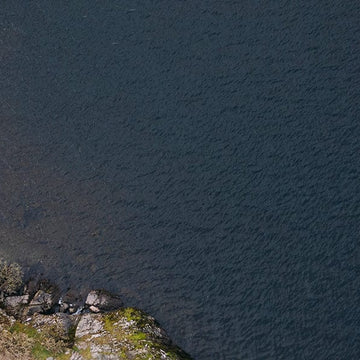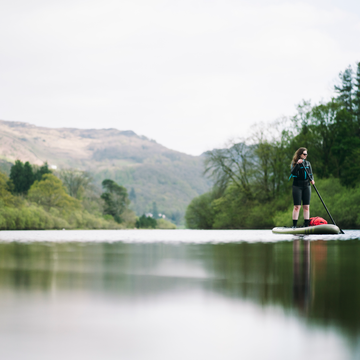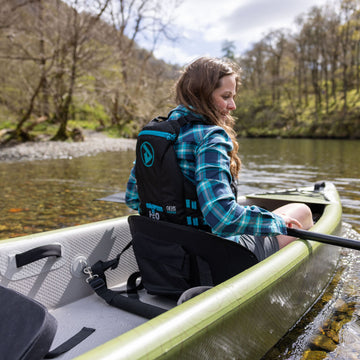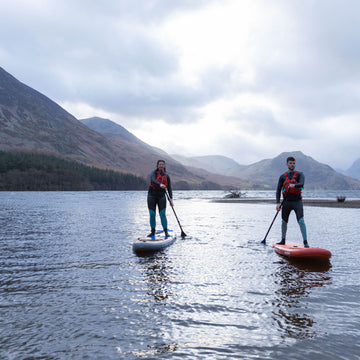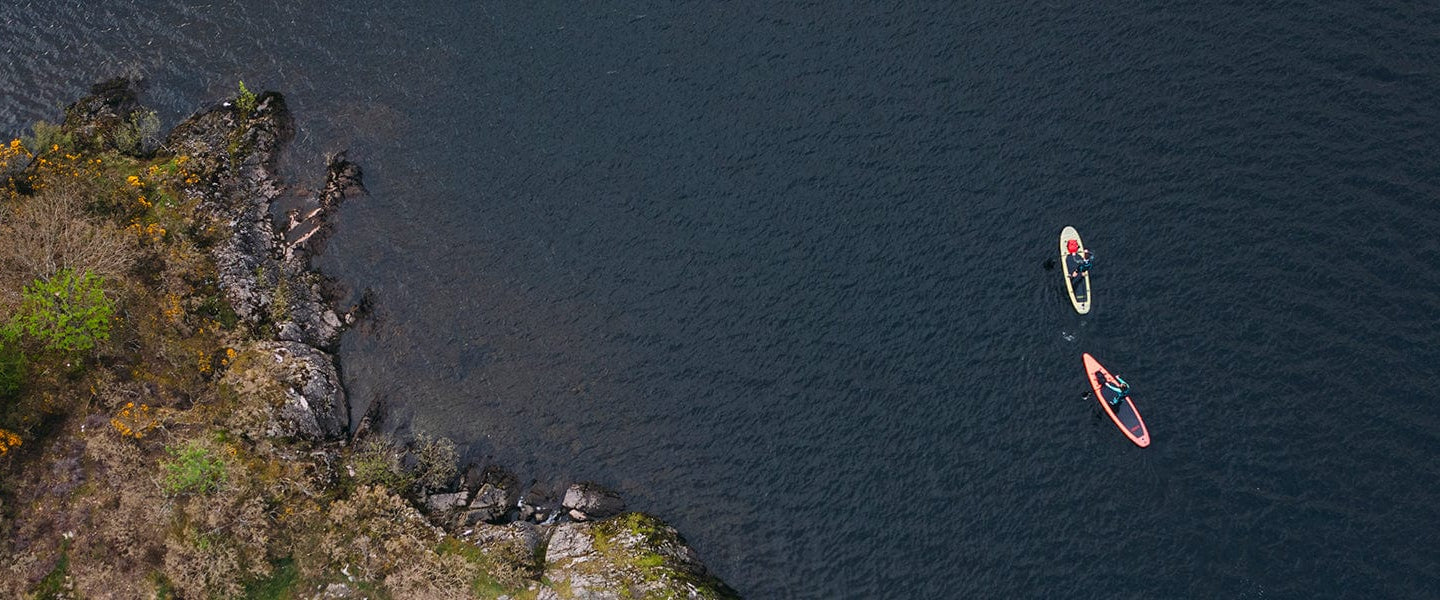
What Size SUP Do I Need?
Choosing the right stand-up paddleboard (SUP) shouldn’t be a maths lesson. But between lengths, widths and litres of volume, it’s easy to get bogged down. You just want to get out there and paddle — and we’re here to help you do exactly that.
Whether you're heading to the local lake with the kids or eyeing up a weekend-long river escape, we’ve answered the most common SUP sizing questions — and matched them to our Alpkit boards: the Delta and Longshore.
- How does my weight affect SUP size?
- What is SUP volume and why does it matter?
- Does height matter?
- What size SUP is best for different activities?
- How does experience change what board I need?
- Which Alpkit SUP should I choose?
- Can I just keep it simple?
In a rush? Here’s the gist:
- Short and wide = stable and playful — best for beginners, kids, beach fun.
- Mid-length = all-rounder — great for learning, families, and most paddlers.
- Long and narrow = fast and efficient — best for touring and carrying kit.
- Pick a board with enough volume (litres) to support your weight and whatever you're carrying.
- Don’t stress — all Alpkit boards are built for real-world paddling, not spreadsheets.
 How does my weight affect SUP size?
How does my weight affect SUP size?
Your weight (plus anything else you're carrying) helps determine what volume board you should get. More volume = more float, which makes things easier, especially when you're starting out. As a general guide:
- Beginners: multiply your total weight (lbs) by 1.1–1.4 for volume (in litres)
- More experienced: use 0.9–1.1× your weight
Here’s a quick guide using Alpkit SUPs. We’ve estimated the volume for each one, so you don’t have to break out a calculator:
| Board | Approx Volume | Recommended Max Weight |
|---|---|---|
| Delta 8'10" | ~210 litres | Up to 100kg (kids, smaller paddlers) |
| Delta 10'10" | ~250 litres | Up to 150kg (most adults and light gear) |
| Longshore 10'6" | ~235 litres | Up to 135 kg (light touring or larger paddlers) |
| Longshore 12'6" | ~280 litres | Up to 150 kg+ (gear, overnight trips, heavier paddlers) |
If you're hovering near the top of a range or planning to carry extra gear (like camping kit or a wet dog), go for the next size up in volume.
What is SUP volume and why does it matter?
The volume of a SUP (measured in litres) tells you how much buoyancy a board has — in other words, how much weight it can carry and still float well.
Too little volume and your board will sit low, feel unstable, and drag through the water. Too much volume? It’ll feel a bit slower to turn, but that's rarely a bad thing when you're learning.
How is volume calculated?
You don't need to work it out yourself, but here’s the formula:
Volume ≈ Length × Width × Thickness × 0.6
Everything in metres. The 0.6 is a ‘shape factor’ to account for curves and tapering.
For example, a 10'6" board (3.2 m) × 0.81 m wide × 0.15 m thick = ~233 litres. Enough to float most adult paddlers with a drybag or two.
Does height matter?
Your weight is far more important than your height. Taller paddlers may prefer longer boards for balance and comfort — but only if you weigh enough to balance out the volume. Height by itself isn’t the main factor.

What size SUP is best for different activities?
The type of paddling you want to do will shape what board works best. A shorter, wider board is better for mucking about. A longer, narrower one glides further but can feel twitchier if you're new.
- Playing on the water, short trips: shorter boards (under 10') are light and easy to turn.
- All-round paddling: mid-length boards (10'–11') are versatile, stable and good for families or beginners.
- Touring and distance: longer boards (12'+) track straighter and carry more weight over distance.
Still unsure? A good rule is: start with a stable board, then size up for distance or down for play as you get more confident.
 How does experience change what board I need?
How does experience change what board I need?
If you’re just getting started, stability should be your top priority. That means more volume and a bit more width. It'll help you stay upright and actually enjoy the paddle.
As you gain experience, you might want something faster or more responsive. That’s when you can think about longer boards with slightly less width — but there’s no pressure to ‘graduate’ unless you want to.
Plenty of experienced paddlers still love an all-rounder. It’s all about what makes you feel good on the water.

Which Alpkit SUP should I choose?
We’ve designed two SUP families for different types of paddlers. All are inflatable, easy to carry, and built for real-life adventures — not just glossy photoshoots.
Delta Range – Fun, family, first boards
- Delta 8'10" – short, super-stable and playful. Perfect for lighter paddlers, kids, gentle river and lake days, and smaller paddlers.
- Delta 10'10" – brilliant all-rounder. Great for day trips, beginners, and family use.
Longshore Range – Touring and distance
- Longshore 10'6" – stable and manoeuvrable. Good intro to light touring and progression.
- Longshore 12'6" – tracks like a dream. Built for long distances, overnight paddles and carrying gear.
Discover our full range of paddle boards.
Can I just keep it simple?
Absolutely. SUP sizing doesn’t need to be complicated. Here’s a quick cheat sheet:
- First SUP, family and kid friendly, dog rides? Go for the Delta 8'10".
- Want one board that does it all? Choose the Delta 10'10".
- Starting to tour or carry light kit? Try the Longshore 10'6".
- Covering big miles or SUP camping? The Longshore 12'6" is built for it.
And if you’re still not sure, pop into one of our stores or drop us a message. We’ve tested them all — usually with a wet dog and a flask of tea onboard.



![Delta [8'10"]](http://alpkit.com/cdn/shop/files/delta-2025-forest-1.jpg?v=1748877896&width=768)
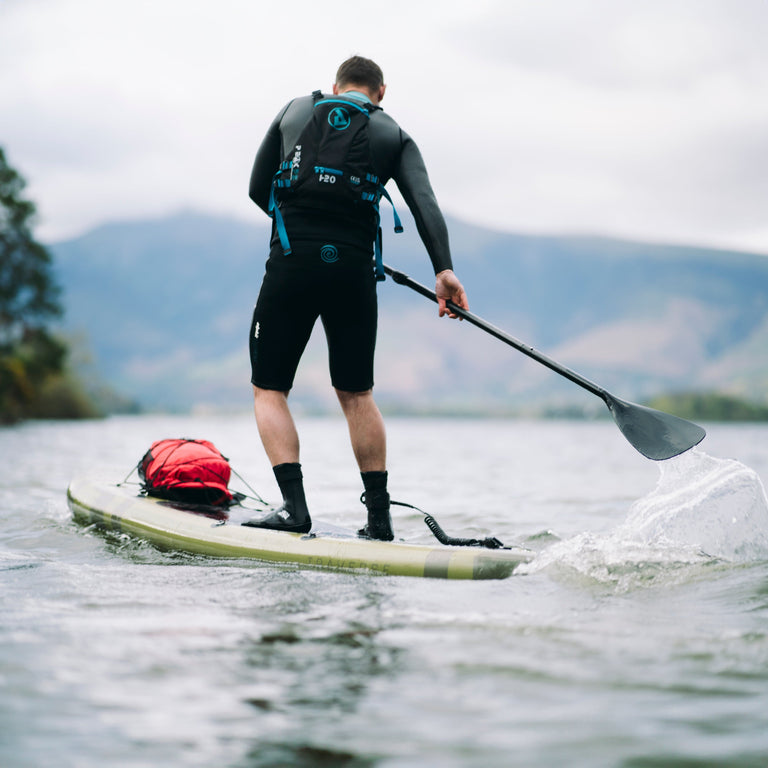
![Delta [10'10"]](http://alpkit.com/cdn/shop/files/delta-2025-reef-1_5272fd57-9f0d-45dc-b9a4-18e5d1c282a7.jpg?v=1748877903&width=768)
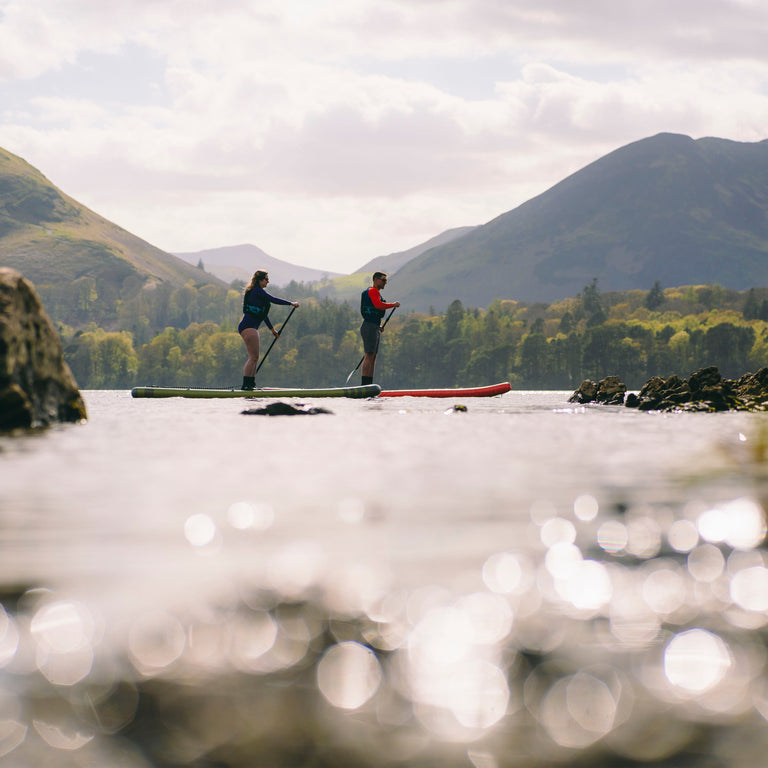
![Longshore [10'6"]](http://alpkit.com/cdn/shop/files/longshore-2025-reef-1.jpg?v=1748877904&width=768)
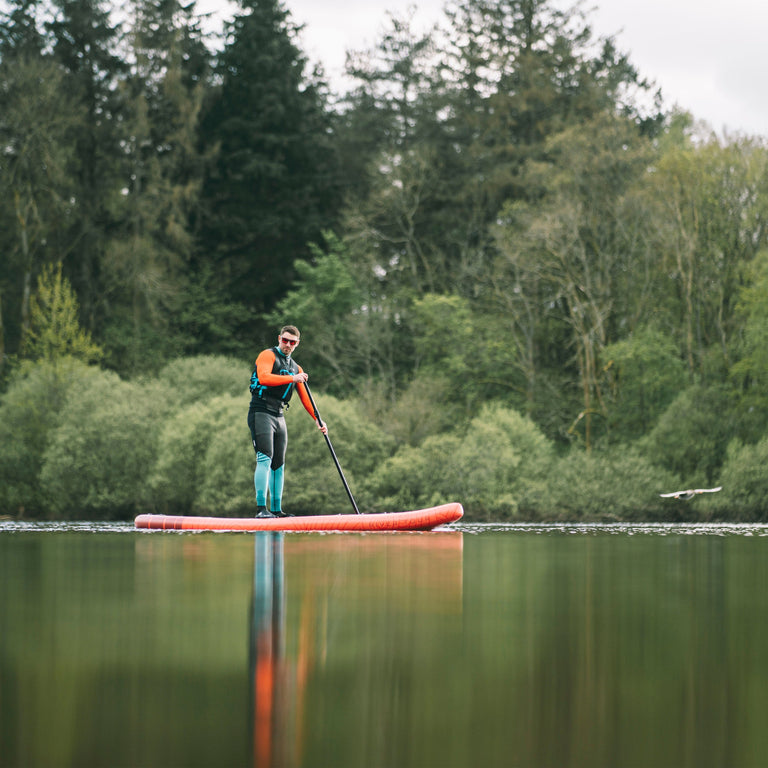
![Longshore [12'6"]](http://alpkit.com/cdn/shop/files/longshore-2025-forest-1_b862e3b6-2ff4-442e-a301-cbe85d7348ec.jpg?v=1748877905&width=768)
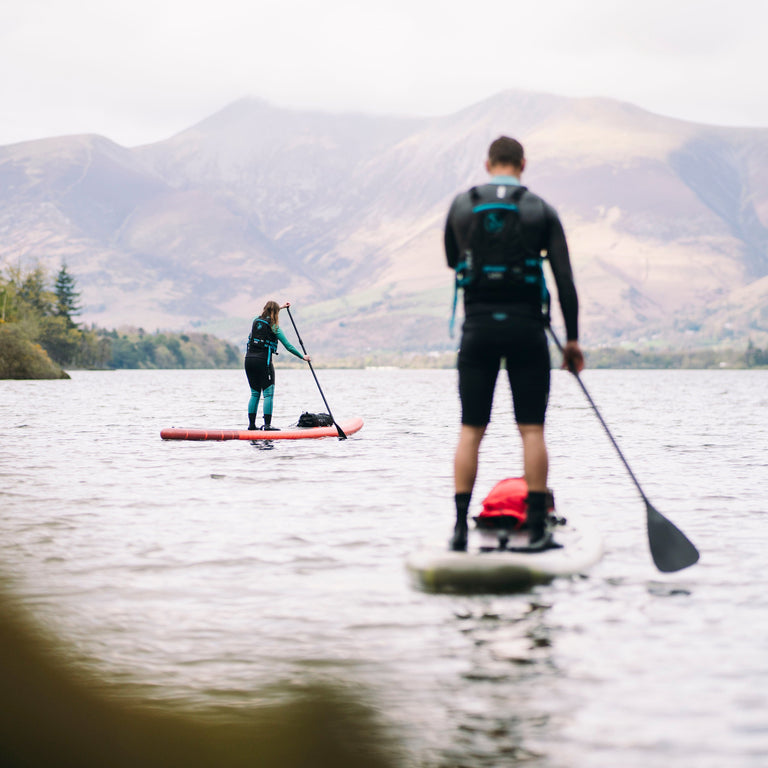


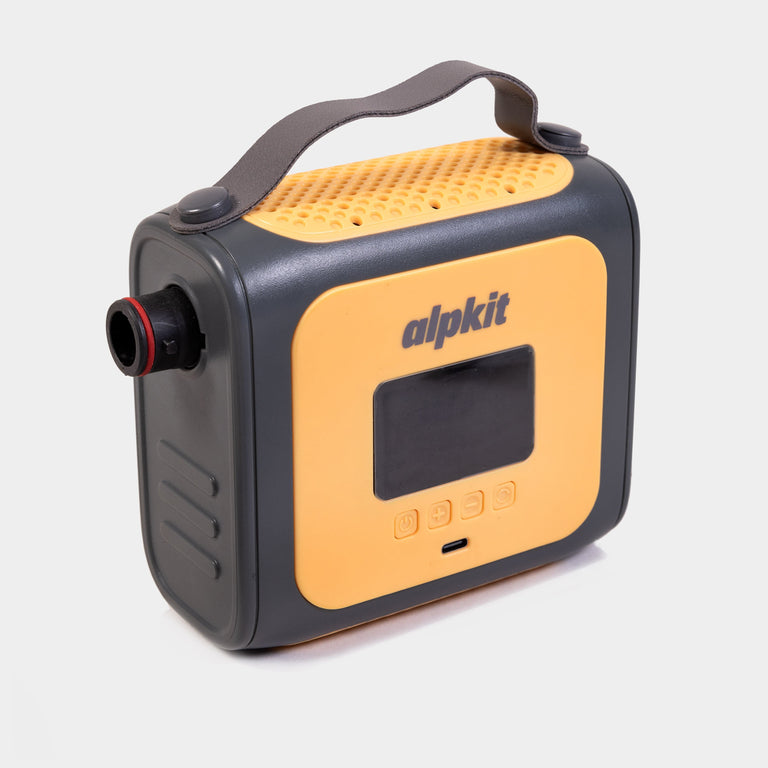
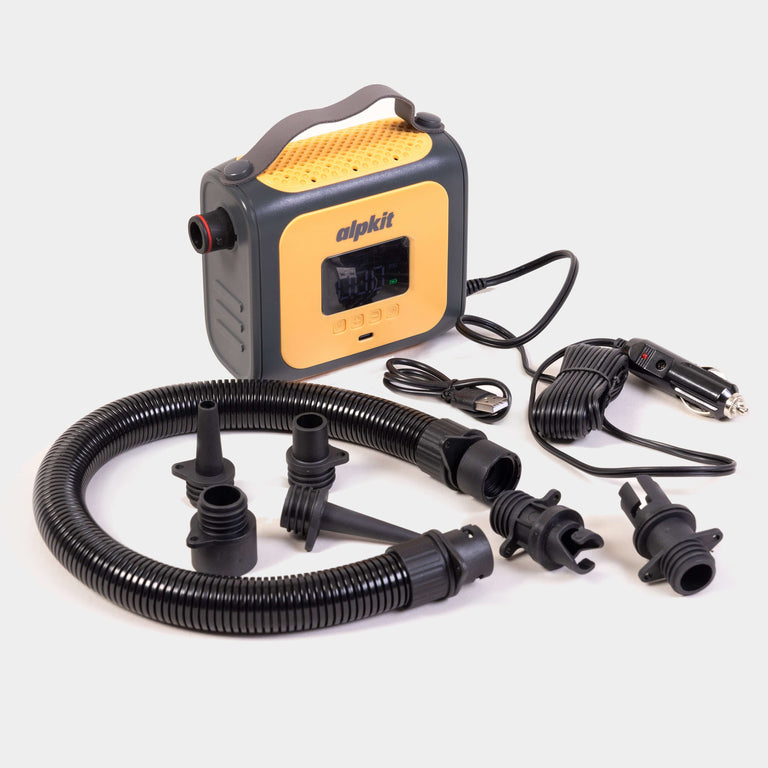
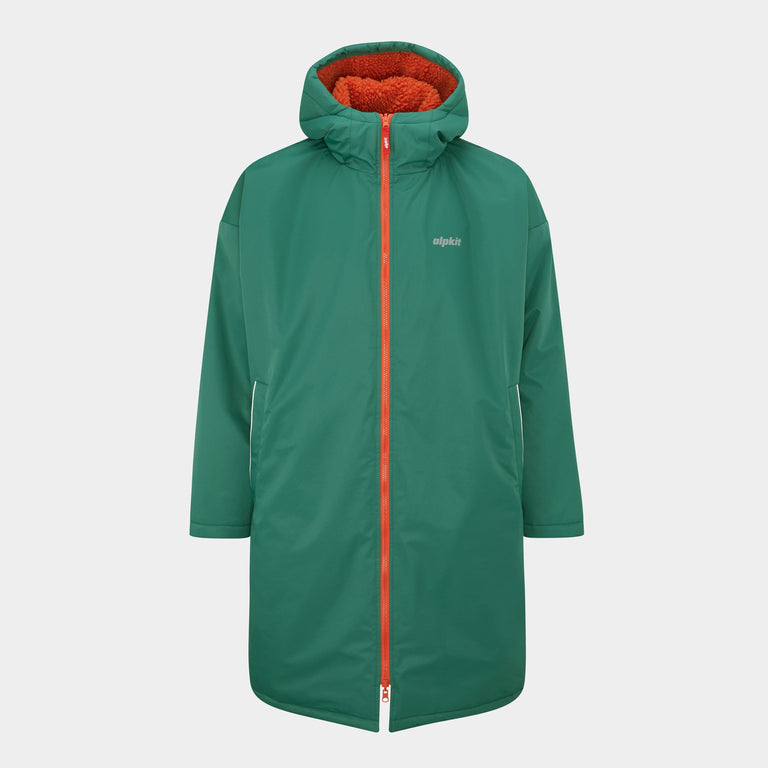
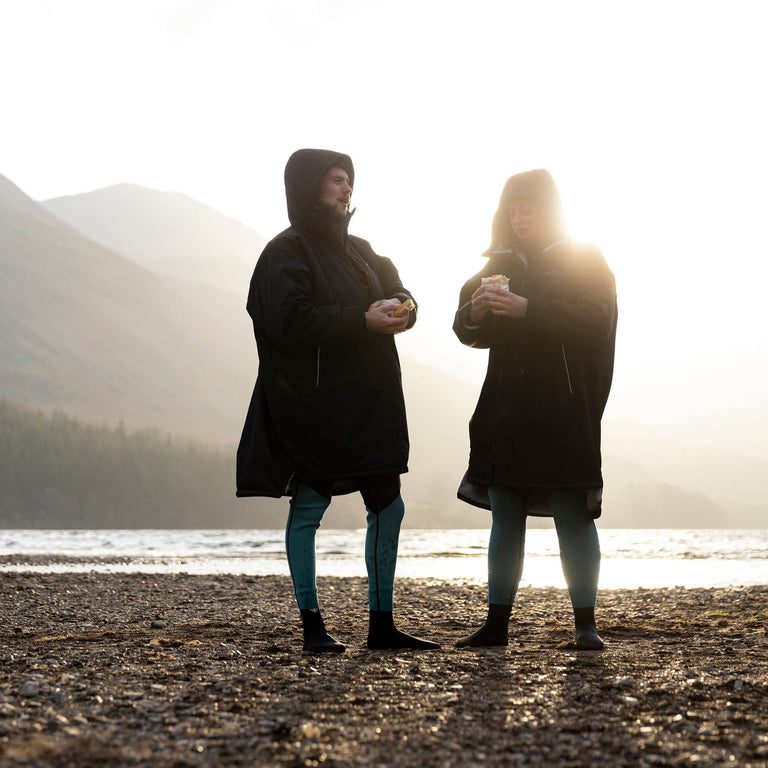
![Straven [Womens]](http://alpkit.com/cdn/shop/files/womens-straven-2025-1.jpg?v=1744723504&width=768)
![Straven [Womens]](http://alpkit.com/cdn/shop/files/womens-straven-2025-3.jpg?v=1744723500&width=768)
![Tarka Wetsuit [Womens]](http://alpkit.com/cdn/shop/files/womens-tarka-2025-1.jpg?v=1744723496&width=768)
![Tarka Wetsuit [Womens]](http://alpkit.com/cdn/shop/files/womens-tarka-2025-3.jpg?v=1744730715&width=768)
![Tarka Wetsuit [Mens]](http://alpkit.com/cdn/shop/files/mens-tarka-2025-1.jpg?v=1744723498&width=768)
![Tarka Wetsuit [Mens]](http://alpkit.com/cdn/shop/files/mens-tarka-2025-4.jpg?v=1744730706&width=768)
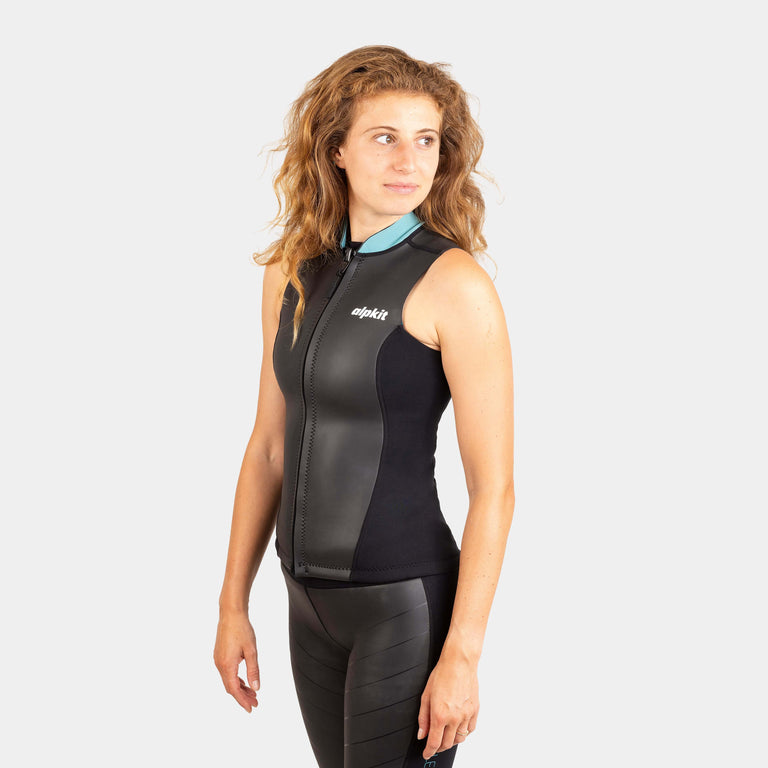
![Element Wetsuit Vest [Womens]](http://alpkit.com/cdn/shop/products/element-womens-vest-shorts-ecom-1_1528bae7-f3c8-4428-8269-460923ac64da.jpg?v=1702652504&width=768)
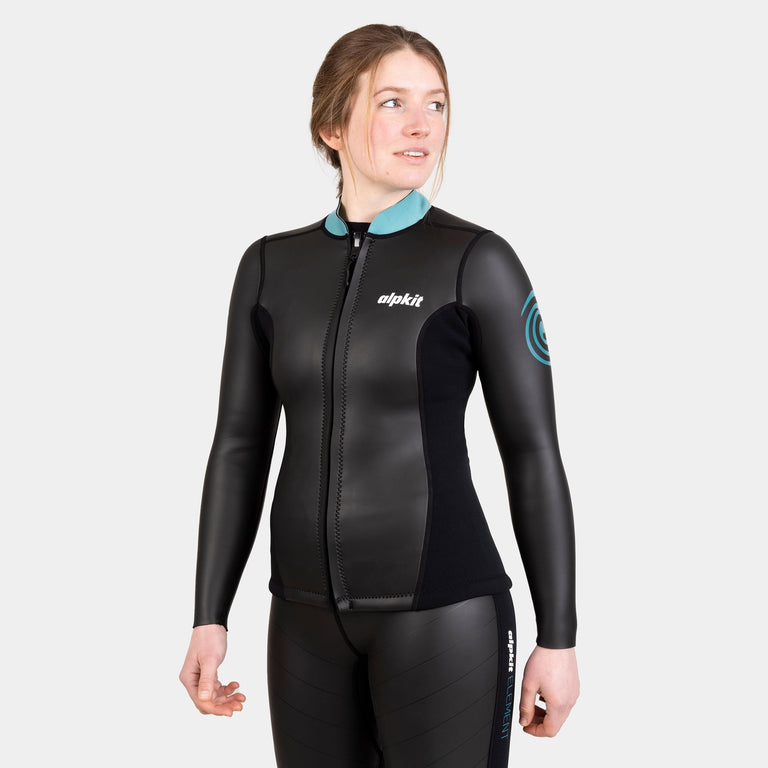
![Element Wetsuit Jacket [Womens]](http://alpkit.com/cdn/shop/products/element-womens-jacket-pants-ecom-2.jpg?v=1702650500&width=768)
